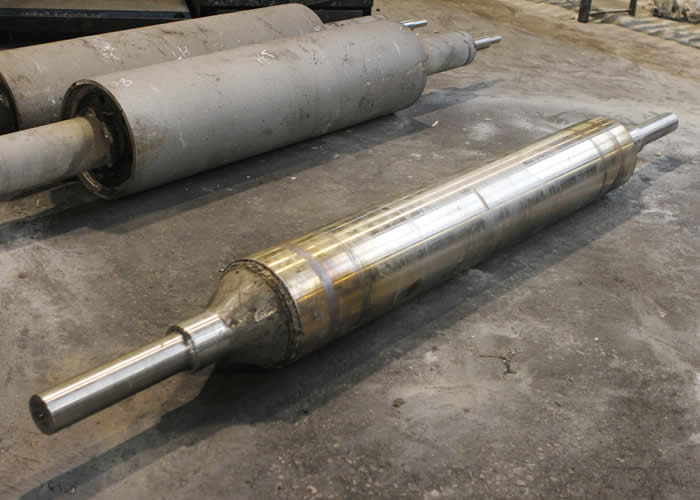
The vast majority of idler rolls used in cast-link belt furnaces today are eleven inches in diameter and are smooth on the contact surface. Because their primary function is to support the cast link belt on the charge end of the furnace and provide “take-up” pressure to the belt, a smooth surface is desired. If the belt is not stretched more on one side than the other, it should remain centered over the idler roll. If the belt is not uniform, if some hearth rolls are not aligned perpendicular to the belt, or some hearth rolls are not level, the belt will track to one side or another. This tracking can only be seen if the idler roll is smooth; thus, it acts as a warning alarm indicating something is not right and repair is necessary.
Some furnaces are fitted with a toothed idler roll to provide consistent uniform tracking. This idler roll style is acceptable if all other measures have been taken to ensure against the above problems. However, if problems exist, the stress produced by those errors will be applied to the belt, and damage will occur. The most prevalent issue caused by inconsistent tracking is broken belt pins due to fatigue stress.
Idler roll construction is much the same as drive drum construction with trunnions inserted to the depth of one diameter. It is preferable to keep trunnion diameters near a maximum of four inches to prevent metal fatigue due to take-up pressure.
Contact Us today with your heat-resistant, high temperature, cast alloy furnace part needs. Our staff can help you select the correct parts or engineer and then fully cast the high-quality alloy parts for your specific application.
In 1975, Omega Casting's founding mission was to produce alloy castings and assemblies with superior metallurgical and dimensional integrity and to deliver those castings and assemblies in a timely manner to our customers at a competitive cost. (READ MORE)
In the ever-more-competitive global marketplace having a furnace operating at top efficiency is not only important, it is essential. For this reason Omega has developed and pioneered the synchronized drive technology that allows for more furnace load capacity... (READ MORE)
After running several companies, Robert Cutshall founded Omega Castings, Inc. in 1975. It was during a gas shortage and Battle Creek, Michigan was picked as a location due to its natural gas reserves. Locating in Battle Creek assured that there would be fuel to run... (READ MORE)
